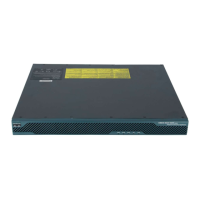Implementing IPSec Network Security on Cisco IOS XR Software
How to Implement General IPSec Configurations for IPSec Networks
SC-109
Cisco IOS XR System Security Configuration Guide
Configuring Crypto Profiles
This task configures static or dynamic crypto profiles.
SUMMARY STEPS
1. configure
2. crypto ipsec profile name
3. match acl-name transform-set transform-set-name
4. set pfs {group1 | group2 | group5}
5. set type {static | dynamic}
6. set transform-set transform-set-name
7. reverse-route
8. set security-association idle-time seconds
9. set security-association lifetime seconds seconds kilobytes kilobytes
10. set security-association replay disable
Step 2
crypto ipsec transform-set
name
transform-set submode
transform
protocol
transform-set submode
mode {transport | tunnel}
Example:
RP/0/RP0/CPU0:router(config)# crypto ipsec
transform-set new
RP/0/RP0/CPU0:router(config-transform-set new)#
transform esp-sha-hmac
Defines a transform set.
• Complex rules define which entries you can use for the
transform arguments. These rules are explained in the
command description for the crypto ipsec
transform-set command.
Step 3
end
or
commit
Example:
RP/0/RP0/CPU0:router(config-transform-set
new)# end
or
RP/0/RP0/CPU0:router(config-transform-set new)#
commit
Saves configuration changes.
• When you issue the end command, the system prompts
you to commit changes:
Uncommitted changes found, commit them before
exiting(yes/no/cancel)?
[cancel]:
–
Entering yes saves configuration changes to the
running configuration file, exits the configuration
session, and returns the router to EXEC mode.
–
Entering no exits the configuration session and
returns the router to EXEC mode without
committing the configuration changes.
–
Entering cancel leaves the router in the current
configuration session without exiting or
committing the configuration changes.
• Use the commit command to save the configuration
changes to the running configuration file and remain
within the configuration session.
Command or Action Purpose

